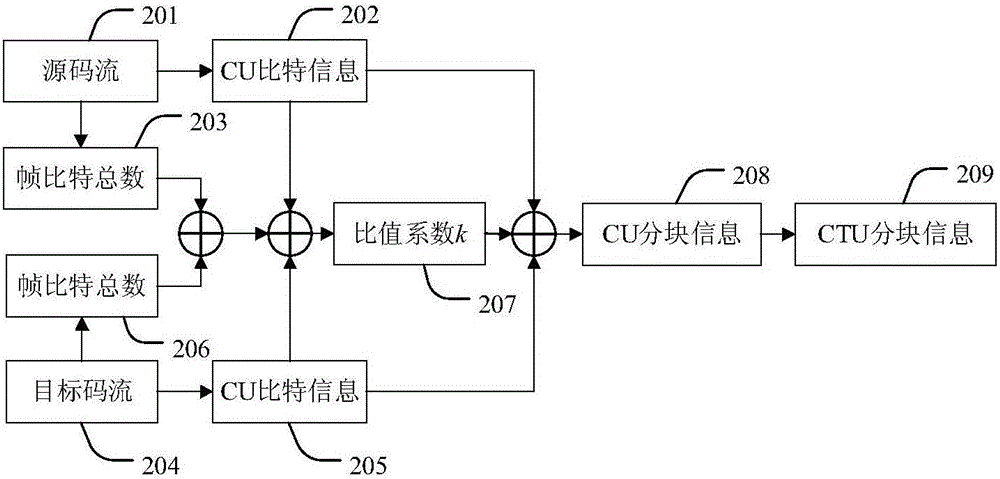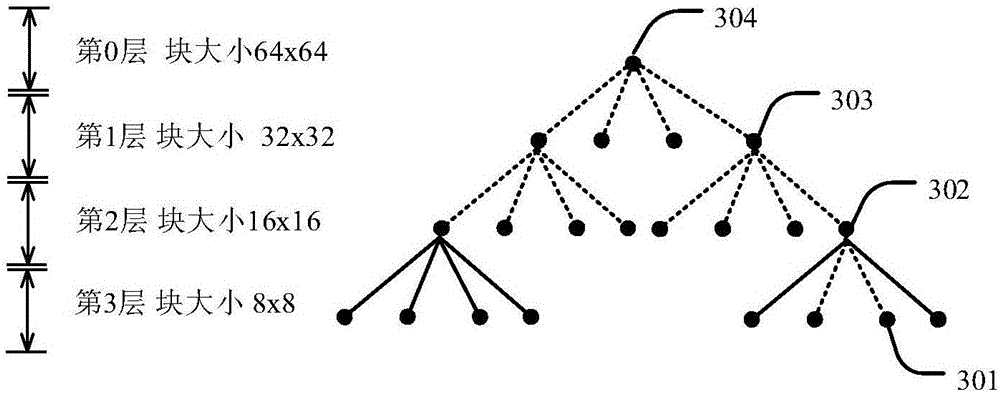H.265 rapid transcoding method based on code stream bit number and block division mapping
A technology of number of bits and block division, applied in the field of video image coding, can solve the problems of inadvisability, time-consuming, and various formats of source input streams, so as to reduce the amount of computation, shorten the transcoding time, and ensure the subjective and objective visual quality. Effect
- Summary
- Abstract
- Description
- Claims
- Application Information
AI Technical Summary
Problems solved by technology
Method used
Image
Examples
Embodiment
[0060] figure 1 As shown, fast transcoding includes:
[0061] 101: Input information code stream.
[0062] 102: Select the MPGE-x series decoder according to the information of the input code stream to decode the input code stream, generate a corresponding YUV file and input it into the YUV buffer. At the same time, it counts the Bit, QP, CTU, encoding standard EncodeType and other information of each encoding unit;
[0063] 103: Select an H.264 decoder according to the information of the input code stream to decode the input code stream, generate a corresponding YUV file and input it into the YUV buffer. At the same time, count the Bit, QP, CTU, encoding type EncodeType, etc. of each encoding unit;
[0064] 104: Select an H.265 decoder according to the information of the input code stream to decode the input code stream, generate a corresponding YUV file and input it into the YUV buffer. At the same time, count the Bit, QP, CTU, encoding standard EncodeType, etc. of each ...
PUM
 Login to View More
Login to View More Abstract
Description
Claims
Application Information
 Login to View More
Login to View More - R&D
- Intellectual Property
- Life Sciences
- Materials
- Tech Scout
- Unparalleled Data Quality
- Higher Quality Content
- 60% Fewer Hallucinations
Browse by: Latest US Patents, China's latest patents, Technical Efficacy Thesaurus, Application Domain, Technology Topic, Popular Technical Reports.
© 2025 PatSnap. All rights reserved.Legal|Privacy policy|Modern Slavery Act Transparency Statement|Sitemap|About US| Contact US: help@patsnap.com



